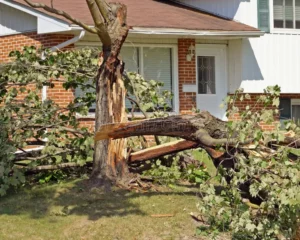Weather can be a powerful force and threaten your most valuable asset, your home. While we cannot control weather patterns, we can still protect our valuable property.
Weather damage mitigation is important for homeowners who live in areas of extreme weather. It not only increases the value of your home and lowers your insurance rates, but it also keeps you and your family safe. Local weather conditions are important for homebuyers to consider, as they could force you to spend a lot of money protecting your new home.
1. Understanding local weather patterns
72% homebuyers think climate risks should be disclosed to buyers during the purchasing process. However, you are the one who will determine whether the weather in the area is a risk. Check to see if you are dealing with a property that is located in one of the following at-risk zones:
Floodplains
Hurricane or erosion zones along the coast
Tsunami or seiche inundation zones
Earthquake country
Extreme heat zones
Wildfire territory
Download the FEMA app for your mobile device to receive weather alerts if you own a house. You may also receive automatic alerts through the Emergency Alert System or Wireless Emergency Alert.
2. Look into your resources
Check with your local government agency before making large purchases or changing your home’s physical structure to see if there are mitigation plans or suggestions for homeowners. They may also have funds available to protect your area.
You may be eligible for the following resources, depending on your location and household income.
- Programs like the Low-Income Weatherization Program in California (LIHEAP).
- The U.S. Department of Energy (DOE) Weatherization Assistance Program is a program that provides weatherization assistance to homeowners.
- The USDA’s Single-Family Housing Repair Loans & Grants
4. Carry the proper insurance coverage
Document the condition of your valuables with photographs and written descriptions. This will ensure that you have the correct amount of coverage on your homeowner’s policy for the weather conditions.
If you are choosing an insurance plan for your home, you should be aware that it may not cover you against weather-related risks in your area. According to FEMA insurance guidance it protects your house, your garage, your fence and some weather-related perils like wildfires, falling objects and hurricanes. Depending on where you reside, you might want to purchase additional insurance such as flood or earthquake coverage.
5. Create a checklist for emergencies
It’s better to prepare for the worst and hope for the best when it comes to weather-related events. Create a list of how you will protect your home in case of a weather event. This should include more than just assembling a survival pack with essentials such as water and flashlights. That plan might include action steps like:
- Turning off water or gas supplies
- Close the fireplace flue
- Close all windows and doors
- Bring pets and outdoor furniture indoors
- Move combustible objects away from your home
5. Keep everything in a safe place
You’ll leave certain tasks unfinished if you wait until the very last minute to secure your home. You can reduce the risk of damage by storing all household items in a safe, secure manner.
If you live in an area that is prone to flooding, you can elevate your electronics or move heavy objects from higher shelves into lower ones if it’s an earthquake zone. Keep outside items such as trash cans and sports equipment anchored if there is a chance of hurricanes or tornadoes.
Ensure that you store your sensitive documents safely. When possible, save electronic copies. Keep physical copies in an air-tight safe, a fire-proof safe, or a safe deposit box at your local bank.
6. Eliminate your biggest risks
Check out local guidelines to see how you can fortify your home against extreme weather. Use them to inspect your property to determine what is needed. Don’t ignore all the upgrades and repairs that need to be done. The consequences can be severe. List all the items in need of repair and order them by highest risk. Installing or paying for the following protections might be high on your list.
- Roof coverings that are non-combustible
- Roof straps and clips
- Backup power source
- Storm windows
- Garage door brace
- Tree Branch Removal
- Waterproof bins
- Insulation for the attic
If you don’t have the funds to cover these costs, check with local or government agencies (refer back to step 2). If you don’t have the funds in your budget, check to see if there are any grants or funding available from local government.
If you live in Florida you can benefit from the Disaster Preparedness Sale Tax Holidays and purchase essential items such as generators, smoke detectors or any other qualifying items.
7. Regular maintenance is essential
Weatherproofing doesn’t happen in a single day. You’ll need to include weather protection in your routine if you live in a region with extreme weather. According to the Insurance Information Institute regular maintenance like trimming trees and cleaning gutters is essential for protecting your home from the elements.
Original Blog: https://realtytimes.com/real-industry-news-articles/item/1049326-how-to-safeguard-your-home-against-extreme-weather?rtmpage=
